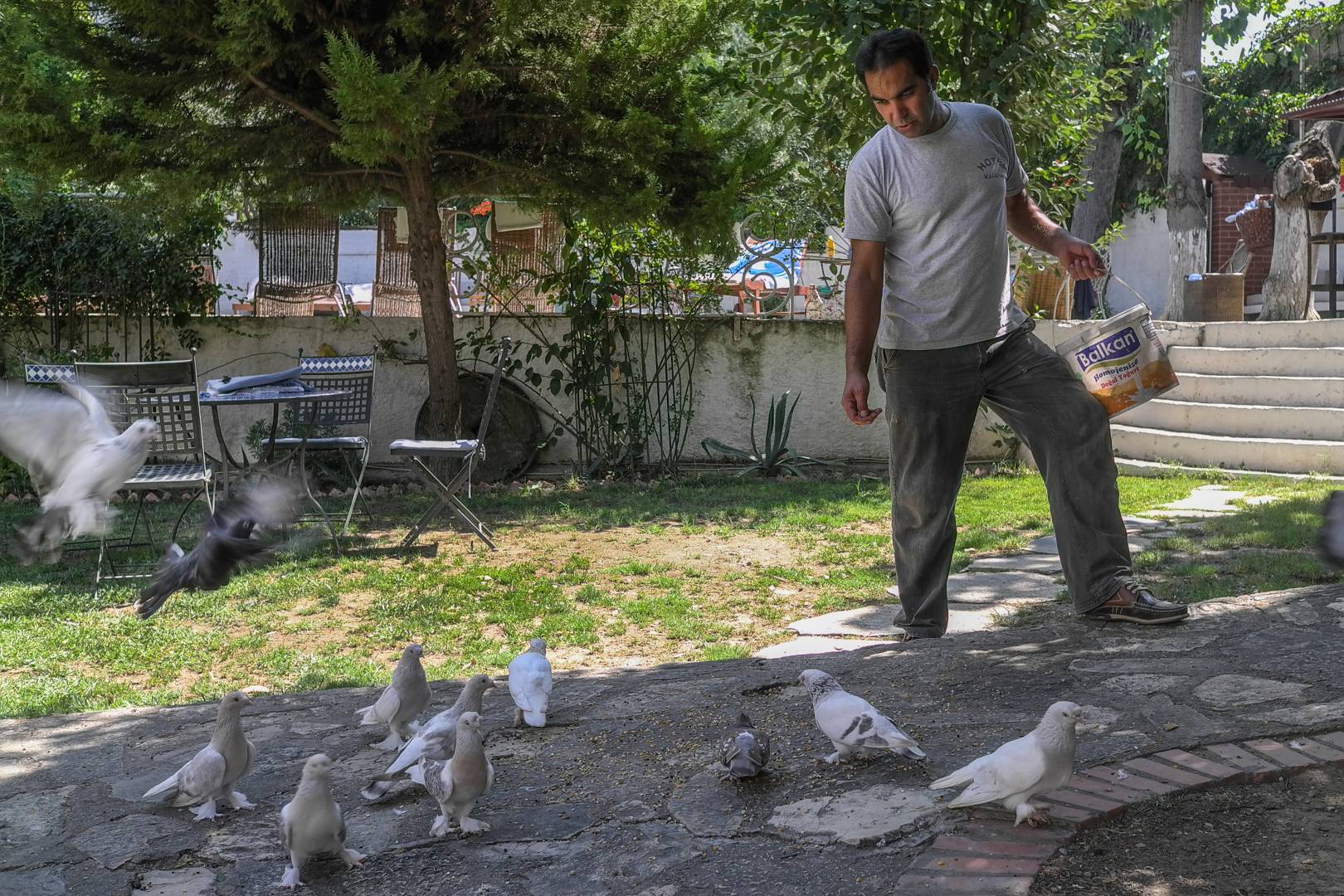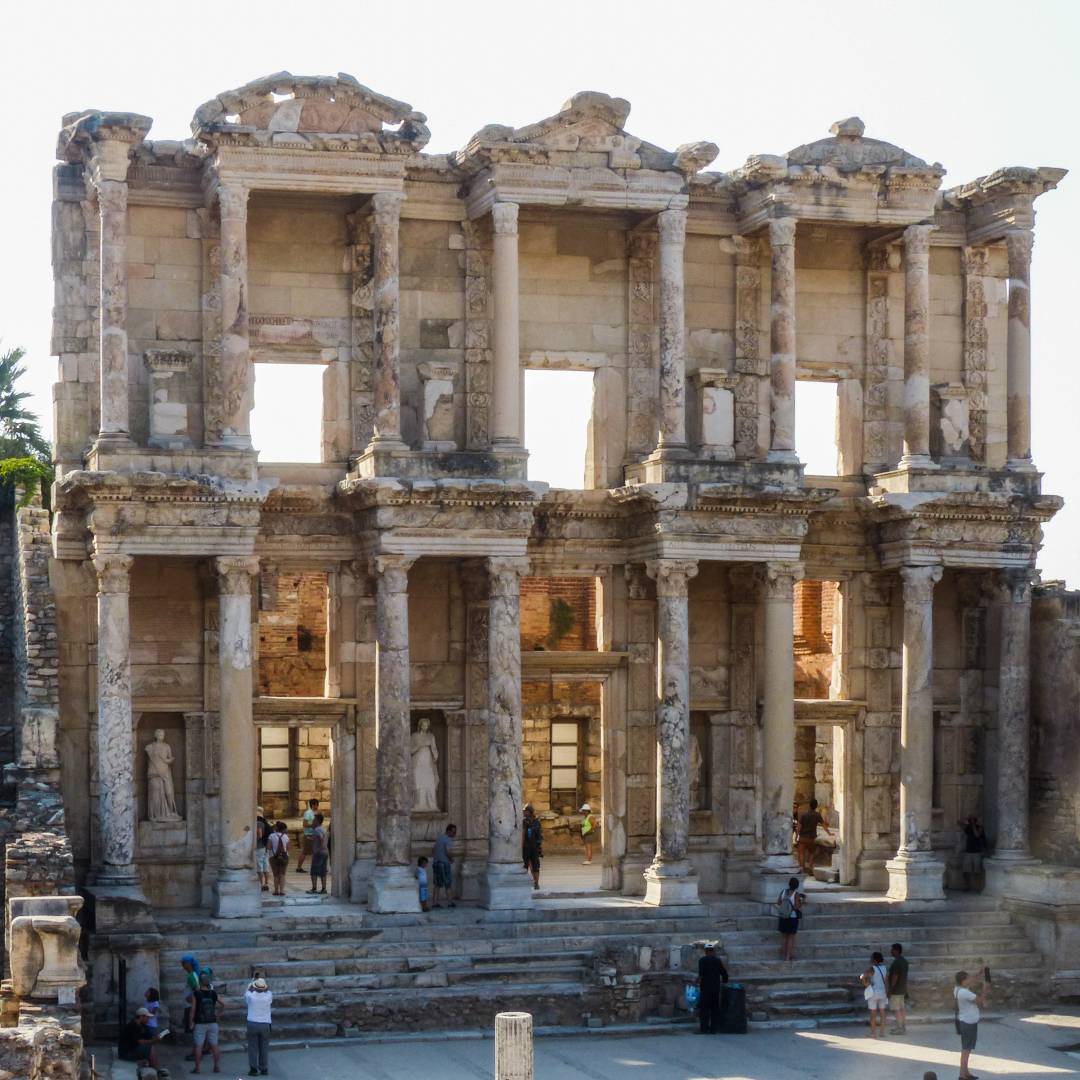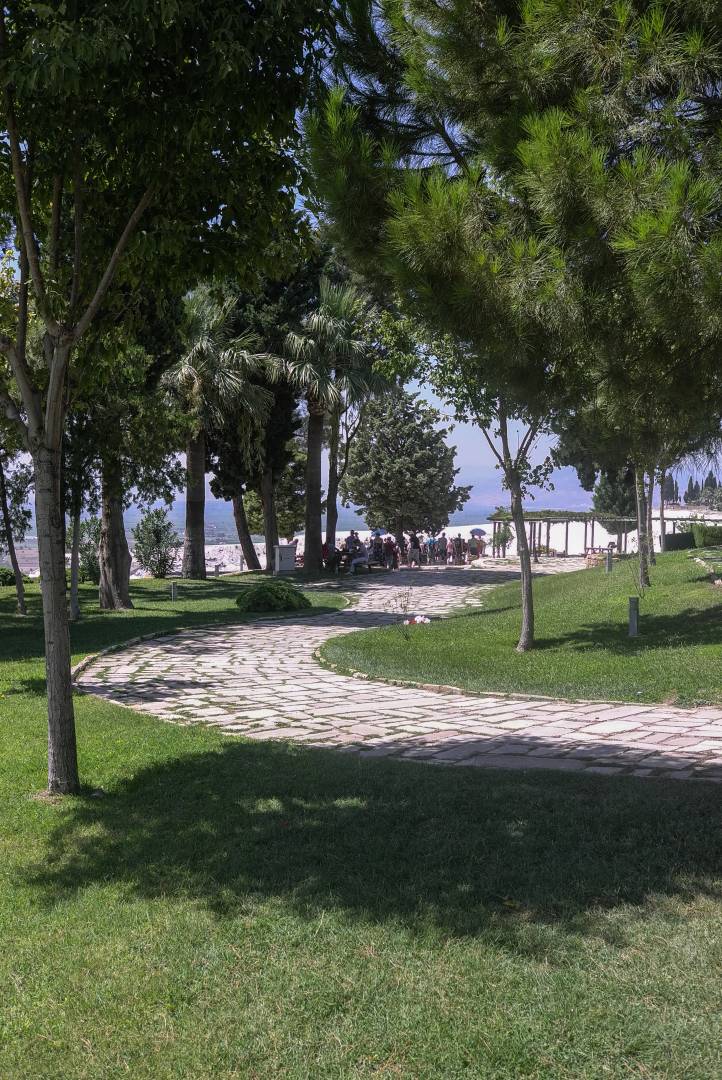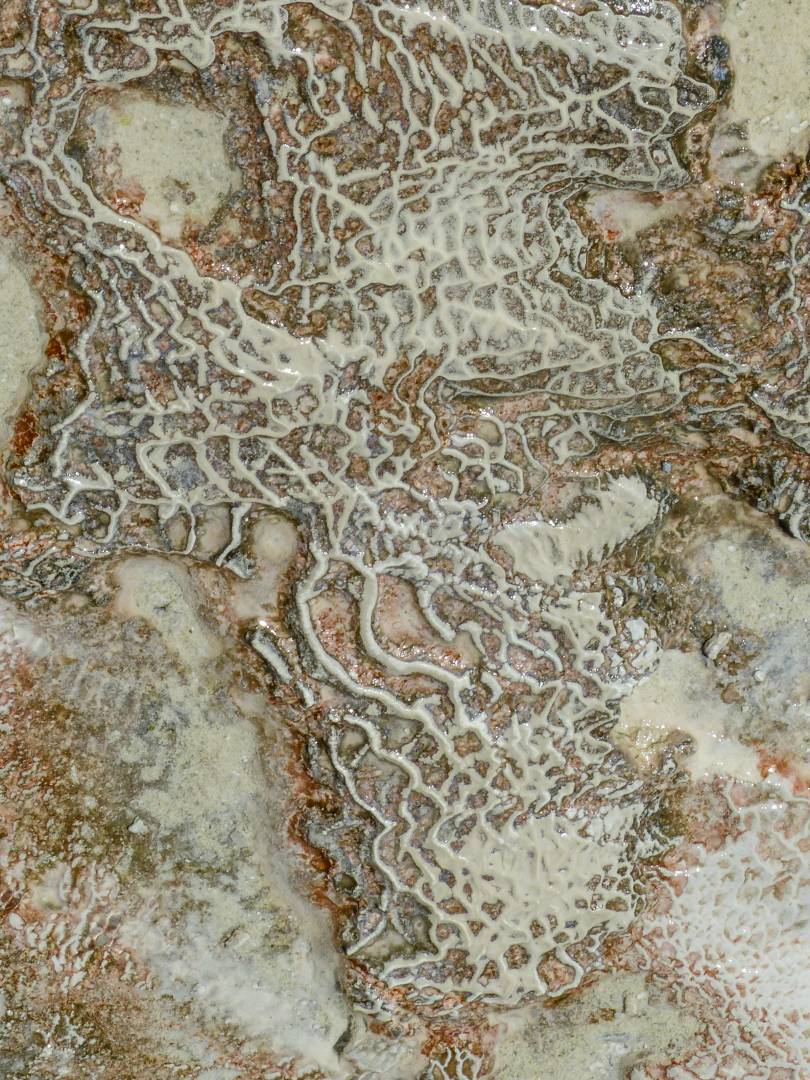“When I saw your booking I thought it was a mistake. Nobody stays here for more than a day or two but you’ve booked for ten”. The manager of the hotel we’d booked in Selçuk, Turkey, seemed rather bemused. My reply was simple: “We just wanted to stop”.
Too many long-haul business flights can be wearing,as the man in front of me in the queue for one plane said: “The very last thing I want to do is get on another plane”.
We felt very much the same, having just flown across the Atlantic to see our relations in Canada that summer. All we wanted to do was to sit by a pool and do very little which, apart from a couple of excursions, we did.
Ephesus
We’d chosen Selçuk because the ancient city of Ephesus, of great historical interest to us, was within walking distance. The hotel staff offered a guide who showed us around so we knew where to head to when we visited again. I used my Leica X1 and Panasonic Lumix FZ200 as the purchase of the X Vario was in the future.
Wikipedia tells us that the city of Ephesus was built in the 10th century BCE on the site of the former Arzawan capital by Attic and Ionian Greek colonists. During the Classical Greek era, it was one of the twelve cities of the Ionian League. The city flourished after it came under the control of the Roman Republic in 129 BCE. It was famed for the nearby Temple of Artemis (completed around 550 BCE), one of the Seven Wonders of the Ancient World. Among many other monumental buildings are the Library of Celsus and a theatre capable of holding 25,000 spectators.
Ephesus is one of the seven churches of Asia that are cited in the Book of Revelation and the city was the site of several 5th-century Christian Councils.
The city was destroyed by the Goths in CE 263 and, although rebuilt, the city lost its importance as a commercial centre after as the harbour slowly silted up. Ephesus was partially destroyed by an earthquake in CE 614.
At the time of our visit, there were two main entrances to the historical site, one at the top of the hill and the other at the bottom. Most people chose to walk downhill through the city. Our guide made a point of getting us to the top of the hill early before the coaches with the passengers from the cruise ships that had stopped at the nearby port of Kusadasi arrived in force.
The path from the entrance crossed a level area between two hills before descending to the Library of Celsus along a relatively narrow main street called Curetes Street. I couldn’t see much evidence of ruins on the hillsides so assumed that most of the city used to be down by the harbour and that this was the posh end of town.
Around Curetes Street the ruins have not been well preserved and columns and reliefs have been placed to indicate where the buildings were. A townhouse has been partially restored and notable ruins included the public toilets and brothel the latter being of particular interest to present-day schoolboys.
Hearing a buzzing sound I saw a drone being flown above our heads, up and down the street. This was the first time I’d seen one used for photography and found it a profound nuisance. Flying so close above people’s heads (under 150ft) would not be allowed in the UK and I was relieved when the tourist flying it lost interest (or battery power) and moved on.
Wikipedia tells me that the Library of Celsus was built originally in honour of the Roman Senator, Tiberius Julius Celsus Polemaeanus and completed by his son around 114-117 CE. It was “one of the most impressive buildings in the Roman Empire” built to store 12,000 scrolls and to serve as a mausoleum for Celsus who is buried in a crypt beneath in a decorated marble sarcophagus.
The library was the “third-largest library in the ancient world” behind only Alexandria and Pergamon. The building is important as one of the few remaining examples of an ancient Roman-influenced library. It also shows that public libraries were built not only in Rome itself but also throughout the empire. The façade was re-erected between 1970 and 1978 after the building had lain in ruins for centuries.
The library is also a setting for wedding photographs and I saw one bride under the statue of Arete, the personification of virtue, attending to her gown in preparation for being photographed with the groom.
Ampitheatre
Leaving the library, we made our way into the amphitheatre. Wikipedia again: “At an estimated 25,000 seating capacity, the theatre is believed to be the largest in the ancient world. This open-air theatre was used initially for drama, but during later Roman times gladiatorial combats were also held on its stage. The first archaeological evidence of a gladiator graveyard was found in May 2007.
Sitting in the amphitheatre, I reflected on the relative smallness of the stage area compared with the huge amount of seating. Facing a gladiator, wild beast or wild residents in such a confined space with the deafening noise of the crowd reverberating in one
The amphitheatre dominates the view down Harbour Street which we took to go to the lower entrance and hence back into Selçuk.
Pamukkale
Wandering around Selçuk, we saw an advertisement for bus trips to Pamukkale, only a few hours away, with pick-up from and drop-off to our hotel. It looked interesting so off we went.
The hill and terraces above the town of Pamukkale are known as the Cotton Fortress (pah-MOOK-kah-leh) in Turkish and adjacent to the terraces are the ruins of the Greek-Roman spa city of Hierapolis. Unfortunately, given that we were on a day trip, we didn’t have time to explore the ruins.
There are a number of entrances to the site and our bus deposited us at the entrance more or less level with the top of the terraces. We had an easy walk past the ruins of Hierapolis to catch our first glimpse of the terraces.
A touch of chemistry
Over millennia, hot springs have deposited their calcium carbonate to form travertine terraces which cascade down the hill. Pools form in these terraces and this UNESCO World Heritage Site is Turkey’s most visited tourist attraction. Our guide told us that the authorities now control the amount of water flowing over each section of the terraces to maintain them, opening valves to feed the various sections of the terraces as they want.

An alternative way of reaching the top of the site is to use the entrance at the bottom of the hill and walk up through the terraces. Water flows down beside the path and removal of footwear is mandatory in order to protect the continually forming travertine. I was struck by the variation in clothing worn by the visitors. The Turkish women wore head coverings and covered as much as they could while many tourists covered as little as was materially possible. A peculiar juxtaposition of fashions and cultures.
Paragliders can be seen over the terraces and a local company provides tandem rides for the adventurous. They launch away from the site and quietly glide overhead with their colourful canopies contrasting with the blue of the sky and the white of the terraces. I assume the steepness of the hillside provides them with lift so they can take their time and glide back and forth. With a few gentle pulls on the lines, they turn gracefully and, with a last look over the terraces, are
The terraces broadly divide into two sections with the ruins of Hierapolis descending onto a promontory between them. Most visitors stay in the area on and above the main eastern terraces and the crowds there can be a bit overwhelming with people happily sploshing around in the terrace pools.
But beyond the promontory, the western terraces are quieter and worth exploring. Also in the west, the tops of the terraces are closer to the level of the path and provide a different viewpoint to those in the east.
Technical note
On a technical note, I was very pleased with the images from the Lumix FZ200, particularly when cropped. The small 1/2.3-type 12.8
Our tour bus was on a fixed schedule so, although we had been at the terraces for hours, eventually the time came for us to make our way past the ruins to the entrance. Then it was back to Selçuk for a late but very welcome dinner.
Two flights later we were back home in the UK with a few days before business called me back to Heathrow airport. I left Turkey with many pleasant memories and a desire to return soon because I knew we had only just scratched the surface and left many beautiful sights unseen.



















excellent, kevin. i love these sorts of travel reports, and the photo’s just add to the enjoyment. My favourite is the bride getting ready, but they’re all a great insight into what you found there.
Many thanks.
Thanks Jason, I appreciate your comments.
Thanks David. We returned in the evening when the crowds from the cruise ships had moved on. Both times were interesting though.
Fascinating article but even better images! It is not an easy place to photograph as crowds of people sometimes get in the way of the lovely buildings; you have done very well. Just the right number of people and animals etc!
Your narrative and images bring back great memories of my first trip back in 1982. Thank you!
You have a strong sense of touching history and scripture when you’re there; particularly with a Methodist Minister for a father who frequently explained the significance of the “Letters from”.
Somewhere I still have the transparencies from these trips, but I have no idea what condition they’re in.
Thanks again for sharing!
Thanks! We were interested in visiting Ephesus having read so much about it but I was surprised how little was left of such an important town. I can only assume that the more commercial areas near the harbour and the Temple of Artemis have long disappeared.
Thanks Dave. I only noted those taken with the FZ200 when I had been particularly impressed with the results of the crop but it’s a point I’ll bear in mind if I mix cameras for another article.
Thank you Kevin for this article, the images look wonderful, and the journey enjoyable. I agree with John N, trying to fathom out which camera took which image would have been nice, as I have had to settle for trying to guess – which is fun, but I do not know if I am right.
A marvellous travelogue with superb pictures. I felt I had been there! It would have been nice if you had expanded (just a little bit!) on which were your X1 and which your Panasonic. I should have said nothing less than a one-inch sensor could have produced those images!
Thanks John, you make a good point. Generally they were taken with the X1 unless I’ve noted the FZ200 in the caption but I think I missed a couple! I have often thought of moving up to Lumix’s one inch sensor model. They are very useful tools.
Another wonderful education and entertaining time shared by a talented Macfilos contributor. I liked the Library and Ampitheater by night and the ruins of Hierapolis. For some strange reason I had deja vu, and was transported to the scene in The Mummy, where they are all on camels waiting for mirage in sunlight to show them Hamunaptra. Thank you for my early weekend read.
Thanks John for your kind comment. I’ll have to dig out that video!
Hello Kevin. Excellent article which took us there with you. I’m with John Wilson in particularly liking the light in the Library and Amphitheatre images.
Thanks Wayne, the light in the evening was lovely and it was much cooler!
Thank you Kevin for recalling many happy days I spent in Turkey, in a previous life. Unlike you, I was there on official business, but managed to visit interesting historical sites. On one occasion I stayed in Izmir and visited the ancient ruins of Ephesus in an off-peak period. Cotton pickers were busy in the fields. Digital photography was not even a dream at that time. 120 film was my medium of choice. How times change.
I enjoyed your pictures very much indeed, particularly that one of the bride beneath a graceful female statue. What an inspired setting for wedding pictures. Thank you.
Thank you David, my initial research told me that the female statue is of Arete the personification of virtue (amongst other things) which seemed appropriate.
A wonderful account of your trip both for the text and images. I particularly like the preparation for the photo-shoot with the association of flesh and stone. This is my favourite shot of the series. Thanks for sharing.
Jean
Thanks Jean, your comment let me see another aspect which I hadn’t thought of!
What a wonderful site and superbly told story, loved the pictures as well. Thanks Kevin for showing them to us.
Thanks Don, much appreciated.
An excellent account of a fascinating part of the world with pictures that illustrate your text superbly. I may never have the chance to visit Turkey, so thank you for this. I hope there will be more to come?
Thanks Richard for your kind comments. Nothing more on Turkey until I can get back there!